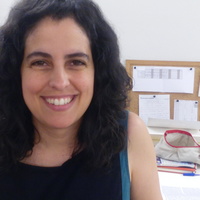Papers by Andree Ekadinata

Environmental Management, 2011
We examine five forested landscapes in Africa (Cameroon, Madagascar, and Tanzania) and Asia (Indo... more We examine five forested landscapes in Africa (Cameroon, Madagascar, and Tanzania) and Asia (Indonesia and Laos) at different stages of landscape change. In all five areas, forest cover (outside of protected areas) continues to decrease despite local people's recognition of the importance of forest products and services. After forest conversion, agroforestry systems and fallows provide multiple functions and valued products, and retain significant biodiversity. But there are indications that such land use is transitory, with gradual simplification and loss of complex agroforests and fallows as land use becomes increasingly individualistic and profit driven. In Indonesia and Tanzania, farmers favor monocultures (rubber and oil palm, and sugarcane, respectively) for their high financial returns, with these systems replacing existing complex agroforests. In the study sites in Madagascar and Laos, investments in agroforests and new crops remain rare, despite government attempts to eradicate swidden systems and their multifunctional fallows. We discuss approaches to assessing local values related to landscape cover and associated goods and services. We highlight discrepancies between individual and collective responses in characterizing land use tendencies, and discuss the effects of accessibility on land management. We conclude that a combination of social, economic, and spatially explicit assessment methods is necessary to inform land use planning. Furthermore, any efforts to modify current trends will require clear incentives, such as through carbon finance. We speculate on the nature of such incentive schemes and the possibility of rewarding the provision of ecosystem services at a landscape scale and in a socially equitable manner.

Although Indonesia has no shortage of land area that lost its forest cover before 1990 and has be... more Although Indonesia has no shortage of land area that lost its forest cover before 1990 and has become the global leader in land-use based greenhouse gas emissions, the widespread expectation that the afforestation/reforestation approach to Clean Development Mechanisms (A/R CDM) could lead to sustainable development benefits has not so far materialized. The main challenges to implementation of the current A/R CDM mechanisms are in (1) the definition of forest and its institutional implications, (2) the projectization that is embedded in the definition of CDM, (3) non-linear baselines related to forest transitions that complicate attribution, (4) inherent lack of synergy with other development activities and (5) high transaction costs and temporary nature of credits. In possible new international regimes that aim to include all relevant changes in land-use based emissions, a more outcome-based programmatic approach may partially replace the project cycle assessments of CDM. However, there will still be a need to assess the combination of factors and policies that can be expected to enhance terrestrial carbon storage through voluntary land-use decisions, by a combination of reduced emissions and enhanced storage. Tradeoffs usually exist between local livelihoods and carbon storage, but assessment of the opportunity costs of C sequestration requires analysis at the landscape and community scale at scenario level, including local adjustment and optimization. We explored such scenarios for a number of cases in Indonesia that range from a forest margin to a degraded lands setting. FALLOW model applications were set up for 4 landscapes in Indonesia (15-98% forest cover, 1-55% grassland, 17-51 persons km À2 ) to test the internal consistency of the hypothesis that farmer-led development of tree-based land-use systems in response to accessible markets, legal tenure arrangements, availability of reliable technical information and local investment can convert degraded forest lands at low public cost and form an attractive alternative to project-based interventions with detailed prescriptions and planning. The calculated (non-linear) baselines for carbon stocks varied from an average trend of À0.26 to +0.23 Mg C ha À1 year À1 over a 25 year period of assessment, equivalent to a net sequestration of À0.95 to 0.84 t CO 2 ha À1 year À1 The highest value for predicted additional carbon storage in the wider landscape did not coincide with the best results for local livelihoods, but in each of the case studies the results for a 'programmatic' removal of constraints to profitable smallholder tree-based production systems was more attractive than a 'prescribed' tree planting in designated project areas. These results support the design of international modalities for an outcome-based approach to enhancing carbon storage with local flexibility in implementation. #
Post-Tsunami call's for establishing or improving coastal protection has been quick and loud... more Post-Tsunami call's for establishing or improving coastal protection has been quick and loud, as presence of live barriers could probably have reduced loss of many human lives. Effective coastal zone management has to provide environmental protection but also has to meet ...

Over the past decades, technical advances in image classification for land cover mapping have bee... more Over the past decades, technical advances in image classification for land cover mapping have been marked, especially through object-based image analysis. As part of a bigger effort in analyzing forest and tree cover transition in South East Asia over the past twenty years (1990, 2000, 2010), we conduct land use/cover mapping of Vietnam, wall-to-wall, using hierarchical object based classification approach. The first step is to decide a classification scheme that is consistent and comparable across the region through an expert panel discussion. The hierarchy is divided into 4 levels. Level 1 differentiates between forest and non-forest classes. In Level 2, forests are differentiated further into undisturbed and logged-over, and non-forests into tree, non-tree and nonvegetation. Level 3 addresses finer differentiation, i.e., agroforest, cropland, settlement, estate/monoculture/orchad, forest plantation and etc. The last level, Level 4, differentiates further into rubber and others agroforest, pulp plantation, teak plantation, oil palm monoculture, rubber and others monoculture, shifting cultivation and etc.
... Most smallholder tree-based farming systems are proven to be compatible with the conservation... more ... Most smallholder tree-based farming systems are proven to be compatible with the conservation of soil, water and biodiversity (Manurung et al, 2006). ... Sibolga January 17-18, 2006 Manurung, GE, JM Roshetko, Suseno Budidarsono, and Iwan Kurniawan. 2008. ...
Based on the RACSA carbon-stock study (Rahayu et al 2010) and an analysis of livelihood strategie... more Based on the RACSA carbon-stock study (Rahayu et al 2010) and an analysis of livelihood strategies, five scenarios were defined. Note that the 'red' landscape occurred under the logging scenario and the LRWR and its buffer area were mostly converted to oil palm plantation under Oil Palm B scenario.

Amid the euphoria of Reducing Emissions from Deforestation and Forest Degradation (REDD) and REDD... more Amid the euphoria of Reducing Emissions from Deforestation and Forest Degradation (REDD) and REDD+ discussions, the expectations of large financial gains raise the interest of all. A country, however, will only enjoy REDD benefits if the cost of REDD is lower than the benefit. The opportunity cost analysis is an effective tool for assessing the feasibility of REDD+ since the largest portion of costs associated with REDD+ and can help to identify fair compensation for those who change their land use. The opportunity cost analysis has been exercised in Tanjung Jabung Barat (Tanjabar) district-Indonesia to examine the economic-feasibility of carbon emission reduction under different type carbon price scenarios. This study reveals a sharp decline of land-use systems with high carbon-stock and low profitability is obvious. On mineral soil, low carbon-stock and high profitability (mostly oil palm) has increased rapidly, especially in the period 2000-2009. It has become the dominant land-use system. The low-to-medium carbon stock and medium profitability land-use category increased from 1990 to 2005 but declined from 2005 to 2009. The low carbon-stock and low profitability category was constant and the proportion of the area was below 15%. The ex-ante analysis in predicting the potential for future emissions reduction in Tanjabar through REDD+ approaches shows that the cumulative emission of Tanjabar in 2020 is estimated at 61.91 Mg CO 2-eq /Ha.Year, while the reduced emission by excluding all land use conversion below $5 threshold is estimated at 51.71 Mg CO 2-eq /Ha.Year. This means that there is a potential for 16% emission reduction using $5/ton CO 2-eq incentive. Another important finding in this study is that if the price of carbon increases by double to $10, the amount of reduced emission does not change much. This can use as a basis for determining the right amount of incentive for trade-off between economic profitability and climate change mitigation effort in Tanjabar using REDD+ scheme both at seller and buyer perspectives.










Uploads
Papers by Andree Ekadinata